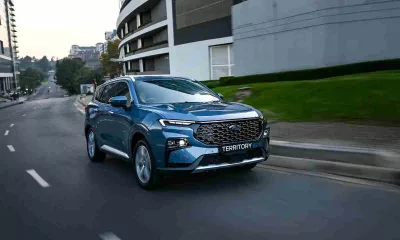By Mike Fourie – Editor
I wasn’t really fond of Audi products prior to my first experience of the A3 Sportback, which was about two years ago. But I drove the stylish hatch – and I liked it. Then I got to grips with the awe-inspiring RS4 and I began having daydreams about an alpine pass echoing with the bellowing baritone of that super saloon’s 4,2-litre V8. But I still had reservations… Sportbacks are a bit pricey (relative to prices of A4s), and the RS4 fell just short of being an all-time classic by virtue of its rather understated compact saloon origins. This time, it’s different – the TT is the third consecutive new Audi to earn my appreciation and I have no major gripes about it. Despite the boutique appeal of its predecessor, the bigger TT v2.0 cannot be mistaken for anything but a real sportscar.
The most controversial aspect of the new Walter de’Silva-designed TT is its styling. Some say the car lacks the uniqueness of the original TT and that its design “is too smooth and overtly feminine”. Well, I don’t really agree with that. Although I have to say that the car is flattered by 18-inch (or bigger) wheels, the TT is a good example of a modern vehicle that looks better in the metal than it does in pictures. Although many people liked the classic, or as some say, iconic, styling of the original TT, this one holds more universal appeal. The newcomer has a drag coefficient of 0.30 and its seductively-sculpted body is so well proportioned that it almost masks the fact that TT v2.0 is 137 mm longer, 78 mm wider and a bit higher than its predecessor. That growth has been translated into increased space inside and when the backrests are folded down, the 290-litre luggage compartment grows to 700 litres.
But that does not mean the TT’s become plump; By virtue of Space Frame (ASF) technology, aluminium accounts for 69 per cent of the TT’s total body weight and the Coupé’s static torsional stiffness is roughly 50 per cent higher than before. To put the improvements into context, if the new TT was built entirely out of steel, it would be 48 per cent heavier!
The aforementioned weight and stiffness improvements are dovetailed with a new multi-link rear suspension, a lowered centre of gravity and wider front and rear tracks. The biggest improvement, however, is the steering, which is much sharper and allows the driver to place the car with pinpoint accuracy. The responsive steering has thankfully not resulted in a reduction of straight-line speed stability, and apart from the expected increase in wind noise at high speed (around the frameless side windows), the TT tracked straight and true well above the legal road limit.
Both the 2,0T and range-topping 3,2 quattro are offered with the choice of a short shift six-speed manual ‘box or six-speed dual clutch S-tronic transmission. The 2,0T FSI’s power output (147 kW) is delivered between 5 100 and 6 000 r/min and CAR recorded a 0-100 km/h time of 6,92 seconds and a top speed of 236 km/h with the six-speed manual version of the 2,0T… Read the full road test in the 300-page Anniversary Edition – on sale now.
We recently published an online driving impression of the six-speed 2,0T model (click here for more), and, having driven the 2,0T and 3,2 quattro back to back during the launch, the front-wheel drive entry-level model was my pick of the litter. The VW Group’s ubiquitous and award-winning TFSI unit is so well matched to the TT’s nature… it’s flexible, responsive and those gruff barks that emanate from the exhaust tips during upshifts are a decadent delight indeed.
Meanwhile, the 184 kW 3,2-litre V6 model produces peak torque of 320 N.m from 2 500 to 3 000 r/min and Audi claims the S-tronic model will sprint from zero to 100 km/h in 5,7 seconds and go on to a governed top speed of 250 km/h. The S-Tronic (DSG) transmission really comes to the fore in the 3,2 quattro model – rapid gearshifts (especially when selecting lower ratios) require nothing more than flicks of the steering-wheel mounted paddle shifters and then there’s the throaty burble of the V6 engine to savour over and over again. If you must have the quattro transmission, the 3,2 is your only option – but you’ll never want for mid-corner grip or superb traction out of the bends.
The TT Coupé 2,0 TFSI features 17-inch cast aluminium wheels and the 3,2 quattro features forged 18-inch lightweight alloys. Run flat tyres (claimed to be capable of continuing for 50 km after suffering a total loss of pressure at a vehicle speed of 80 km














